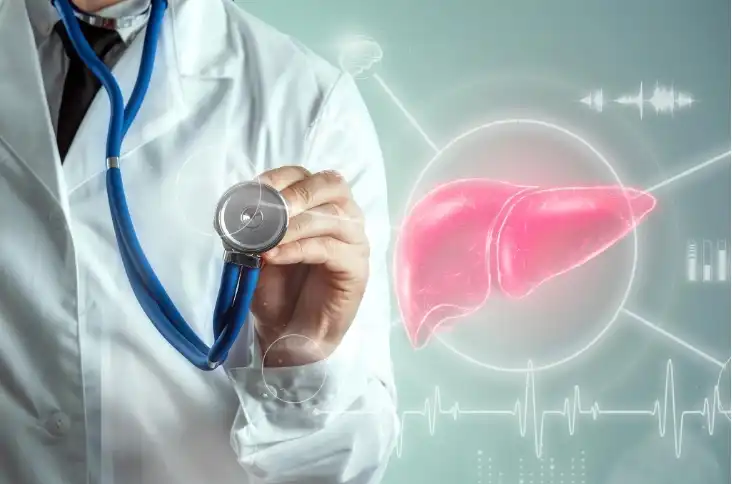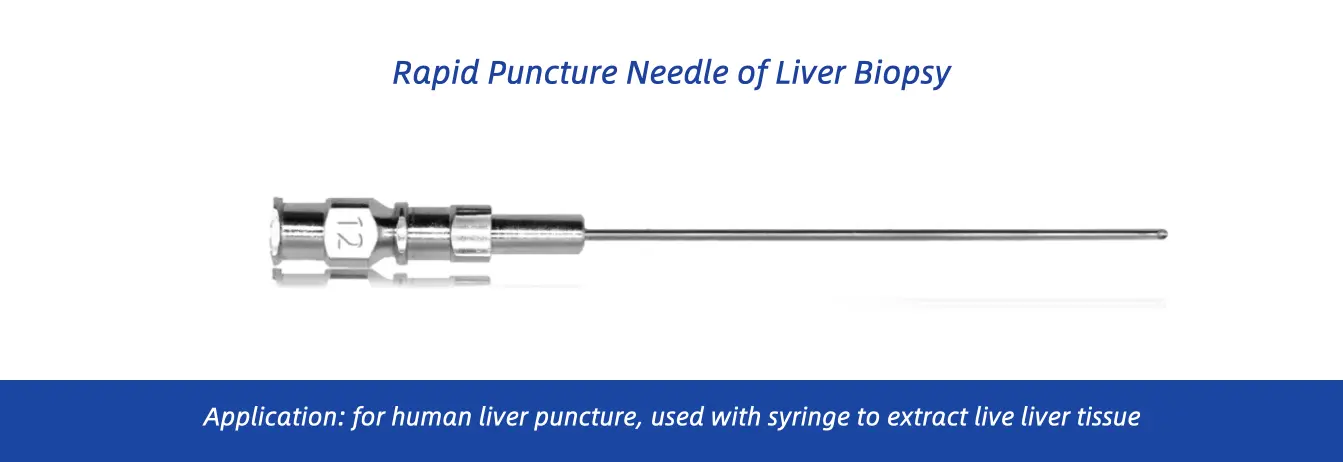In the world of modern medicine, understanding the inner workings of our bodies is crucial for accurate diagnosis and effective treatment. When it comes to liver health, a needle liver biopsy, also known as a needle biopsy of the liver, is a powerful tool that provides invaluable insights. Let's take a detailed look at what exactly occurs during this procedure.

Preparation: Setting the Stage
Before the actual needle liver biopsy takes place, there is a significant amount of preparation involved. Firstly, the medical team will conduct a comprehensive assessment of the patient's medical history. This includes looking into any pre-existing liver conditions, such as hepatitis, cirrhosis, or fatty liver disease, as well as other factors like allergies, current medications, and bleeding disorders. This information helps them determine if the patient is a suitable candidate for the biopsy and if any special precautions need to be taken.
The patient will then be given specific instructions to follow. This typically involves fasting for a certain period before the procedure, usually around 4 to 6 hours, to ensure the stomach is empty. Emptying the stomach reduces the risk of complications during the biopsy, especially if the needle were to accidentally puncture the bowel. Additionally, patients are often asked to stop taking certain medications that could increase bleeding risk, such as blood thinners, a few days prior.
On the day of the biopsy, the patient will be taken to a dedicated procedure room. Here, they will be made comfortable on a bed or examination table. The medical staff will then clean the area over the liver, which is usually on the right side of the abdomen, with an antiseptic solution. This meticulous cleaning helps prevent any potential infections.
Local Anesthesia: Numbing the Area
Once the patient is settled and the area is prepped, the next step is to administer local anesthesia. The doctor will use a fine needle to inject a numbing agent, such as lidocaine, into the skin and the underlying tissues. This initial injection might cause a brief stinging or burning sensation, similar to a small pinch, but it quickly subsides as the anesthetic takes effect. The purpose of the local anesthesia is to numb the area thoroughly so that the patient experiences minimal pain during the actual biopsy. It's essential to ensure the patient's comfort throughout the procedure, and this step plays a vital role in achieving that.
Insertion of the Needle Biopsy of the Liver
With the area now numb, the doctor will carefully introduce the specialized needle biopsy of the liver. This needle is a thin, hollow instrument, meticulously designed to extract a small sample of liver tissue. The doctor will use ultrasound or other imaging techniques to guide the needle's insertion accurately. By visualizing the liver's position and the surrounding structures in real-time, they can avoid vital organs and blood vessels, minimizing the risk of complications.
As the needle is slowly inserted through the skin and into the liver, the patient may feel a sensation of pressure. It's like something is gently pushing against the inside of the abdomen. Some patients describe it as a dull, aching feeling. This occurs because, despite the local anesthesia, the liver and its surrounding tissues are being manipulated. The body can still sense this intrusion to some extent. In rare cases, if the needle were to come into contact with a small blood vessel or nerve, the patient might experience a brief, sharp pain. However, these occurrences are uncommon, and the medical team is trained to handle such situations promptly.
Tissue Extraction and Sampling
Once theneedle biopsy of the liver is in the correct position within the liver, the doctor will extract a small core of liver tissue. This is the crucial part of the biopsy as it provides the material needed for detailed laboratory analysis. The needle is designed to cut and capture a tiny piece of the liver, which is then carefully removed. The process of tissue extraction is relatively quick, usually taking just a few seconds. However, for the patient, it can feel like a significant moment as they sense the actual sampling taking place.
After the tissue sample is obtained, it is immediately placed in a preservative solution and carefully labeled. It's then sent to the laboratory as quickly as possible. In the lab, highly trained pathologists will examine the tissue under a microscope.
They will look for signs of various liver diseases, such as inflammation, fibrosis, abnormal cell growth, or the presence of specific pathogens. The results of this microscopic examination can provide a definitive diagnosis, guide further treatment decisions, and help predict the patient's prognosis.
After the Procedure: Monitoring and Recovery
Once the needle liver biopsy is complete, the patient will be monitored for a period. Their vital signs, including blood pressure, heart rate, and oxygen saturation, will be checked regularly to ensure there are no immediate complications. The area around the biopsy site may feel sore, similar to a bruise. Applying an ice pack to the area can help reduce swelling and numb the pain receptors, providing some relief.
The patient will be instructed to rest for a while and avoid strenuous activities for the next day or two. This includes refraining from heavy lifting, vigorous exercise, or any activity that could put additional stress on the biopsy site. They will also be given post-operative instructions, which may include taking prescribed pain medications if needed, watching for any signs of bleeding or infection, such as excessive pain, swelling, redness, or fever, and following up with the doctor at a specified time to discuss the biopsy results.

Shaanxi Miaokang Medical Technology Co., Ltd had R&d and produce needle biopsy of the liver
is a comprehensive integrator engaged in medical instrument research and development, sales, medical technology research and promotion, and investment in medical institutions. The main research and development of medical ozone therapy equipment, extracorporeal shock wave therapy equipment and other products.
If you had any questions,feel free to contact us:Cathy@miaokang.ltd
In conclusion, a needle liver biopsy using a needle biopsy of the liver is a well-orchestrated medical procedure that plays a pivotal role in understanding liver health. While it may seem intimidating to patients, with proper preparation, skilled medical professionals, and appropriate post-procedure care, the process is generally safe and provides crucial information that can lead to better health outcomes. Understanding what happens during each step of the biopsy can help alleviate patients' concerns and empower them to make informed decisions about their liver care.






